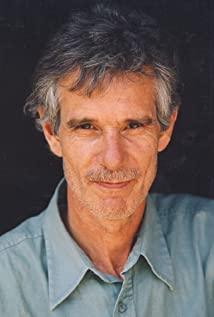The male protagonist watched the old man spit into the finished food and asked, maybe they will be on top of us next month. The old man said, then we can only eat their spit. When he got to the 202nd floor, he took out the knife and told the male protagonist how to cut his flesh, as if he was talking about the cooking method. understand. Because that's the most reasonable way to survive here. The old man represents the kind of people who have already understood the rules of society and followed it. They oppress those below them and take it for granted by those above them. Self-preservation is only natural when resources are insufficient, and it is your kindness to treat others in moderation as your own kindness. So after his death, he turned into an old man with hallucinations, saying that the male protagonist did not respect him when he killed him. Because he cuts the male protagonist's flesh is an action after rational analysis, and the male protagonist kills him is completely revenge.
The female interviewer tried persuasion for two weeks, but it was not as good as a threat from the male protagonist. And she worked in the agency for 25 years and sent countless people down. She represents the unknowing accomplice. They are likely to be non-evil, or even kind, but not fully aware of what they are doing, or the consequences of it. Her dog was killed by the man he sent down. She yelled at the devil, but this devil was created by her hands, whether it was her intention or not.
The black man's obsession with escaping the pit is obvious, but he will be grateful to those who helped him, listen carefully to the words of the wise, and finally give his life to help the male protagonist. Although the original motivation was to go up, in the process of falling, he became more and more responsible for what he was doing, and he didn't complain about the male protagonist when he was about to die. He represents ordinary people at the bottom who want to succeed, but whose conscience has not yet died.
And the male protagonist was asked by many people if he thought he was the Messiah, and indeed he was suffering to save the people. The establishment of order is the sharing of risks at the level of the whole society. Your moderation when you are high is the guarantee of your survival when you are low. It's like buying insurance, but only if you don't run into scammers. Since there is no restraint, there is no guarantee that your moderation will be exchanged for the same treatment by others. You can only rely on gambling, but gambling on human nature is the most uncertain.
Whether the ending is open or not, is it an illusion or not, it is a matter of opinion. But the highest level we can see in the whole process is the chef on the 0th floor, and the top manager we can see is an executive chef. The upper classes never show their faces, because it is not a world at all, and what that world looks like, let alone let you see it, you can't even imagine it. All the struggles made by the lower classes have nothing to do with them.
This film starts in the pit and ends in the pit, dealing with the silent chef, the only scene outside the pit is the interview of the male protagonist. Why is there such a pit, and what kind of people will come in. Neither stated. Perhaps it is also to tell the audience from the side that it doesn't matter, because you are all in such a pit now.
Trivia:
1. According to director Galder Gaztelu-Urrutia, the two people sitting in the inflatable bathtub were screenwriters David Desola and Pedro Rivero.
2. The setting of the film is 6 meters in height for each floor. There are 333 floors, so it has a depth of 1,998 meters. Including the final basement after floors 0 and 333 (the black space is about three stories high), the pit is 2,022 meters deep.
3. Since there are 333 floors of cells, each with 2 prisoners, the total number of prisoners is 666. Given the special significance of 666 in the West, the setting of the pit is basically hell.
4. The protagonist's name is goreng, which means "fried" in Indonesian/Malay, which hints at where he is: in hell.
View more about The Platform reviews











